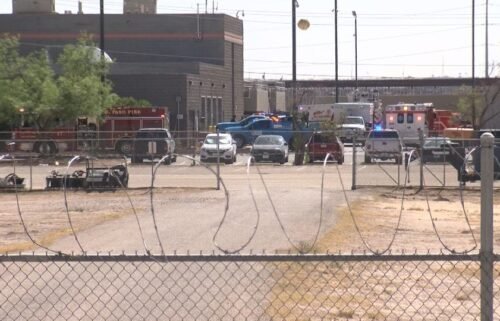Patchwork of programs serve child…
Not long after the last time Cecilia Roberts was sent to an Atlanta hotel to be sold for sex, the then-17-year-old was in a residential facility for girls like her, recovering from the trauma of trafficking as she helped prosecutors convict two adults she had turned to when she needed a place to stay.
Roberts spent about a year in a 15-bed residential facility for girls at Wellspring Living in Georgia, one of a number of places established in response to what experts call a growing population of child sex-trafficking victims.
Now 24 and working in purchasing for a health care system, Roberts said living in the safe house allowed her to focus on her education – and to heal.
“For the first time, I’m in a room full of people that I feel like understood me, and I didn’t have to explain myself,” said Roberts, who returned to Wellspring for the job training program after moving out of the facility. “As a child, it was all that I needed: just peace, and a little bit of attention and love. That’s all that I was looking for.”

The need for long-term and specialized care to treat child sex-trafficking victims is increasing. For decades, rescued children wound up being arrested and thrown into the juvenile justice system. But that’s changed in recent years, as states have moved to steer victims toward treatment. Twenty-four states and the District of Columbia have eliminated criminal liability for minors, with all but one state making the change since 2010, according to Shared Hope International , which works to prevent the conditions that lead to sex trafficking. Experts say some states are reluctant to follow suit due to a lack of services for the children.
“We need more safe spaces where survivors can heal and re-enter their communities,” said Rebecca Epstein, executive director of the Center on Poverty and Inequality at Georgetown Law.
It’s impossible to quantify how many children are sold for sex in the U.S., but Polaris, which operates the National Human Trafficking Hotline, said the number of cases it’s handled in which it’s known that the sex-trafficking victim is a minor has more than doubled over the last five years, from 1,020 in 2012 to 2,495 in 2017.
Advocates say specialized residential care with targeted treatment in a home-like setting can be good for victims, but they also say it would be best if the response were tailored to each child.
“In the ideal world, we’d have a range of services. So that the kid who liked the long-term equine therapy could be treated there. Or the kid who didn’t want to be in any kind of shelter but wanted to get some kind of support in a foster setting or their family home could have that,” said Carol Smolenski, executive director of ECPAT-USA , an anti-trafficking policy organization. “In an ideal world, there’d be a continuum of types of services, but we’re nowhere near that.”
Just this past week, the first girls began to arrive at the Refuge Ranch , a new 50-acre residential community of four-person cottages near Austin.
The ranch offers trauma-informed care, medical treatment, a school program, and group and individual therapy for girls ages 11 to 19, according to founder and CEO Brooke Crowder. The girls will have access to horses and pets. They will be able to take yoga and art classes, or work in a garden. Those over 16 can apply for paid internships to learn job skills.

The ranch was built entirely from donations. While government entities will refer girls to the program and pay for them to stay there, Crowder says that only one of those contracts so far will completely cover what it costs to care for them. Crowder expects to have at least nine children living at the ranch by the end of the year, with plans to eventually house 48 girls.
Kids who are vulnerable to trafficking include those who are homeless or runaways, or who have been neglected or abused. They can end up being trafficked by boyfriends or adults they view as parent figures.
“Whatever you need, they’ll be that person,” said Allison Franklin, who fell under the control of a sex trafficker in her 20s after being sexually abused as a child and a runaway in her teens. “Some of them are so adept at this that you might not even have vulnerability or a need and they’ll create it.”
Now 43, she mentors teen victims in Texas and says the specialized approach at the Refuge Ranch, where the average stay is expected to be a year and a half, will make a difference in their lives.
“Healing from this takes so much time and effort,” she said. “For them to have a safe place that honors them for that long is just amazing.”
___
Sign up for the AP’s weekly newsletter showcasing our best reporting from the Midwest and Texas: http://apne.ws/2u1RMfv
(Copyright 2018 The Associated Press. All rights reserved. This material may not be published, broadcast, rewritten or redistributed.)
KVIA
